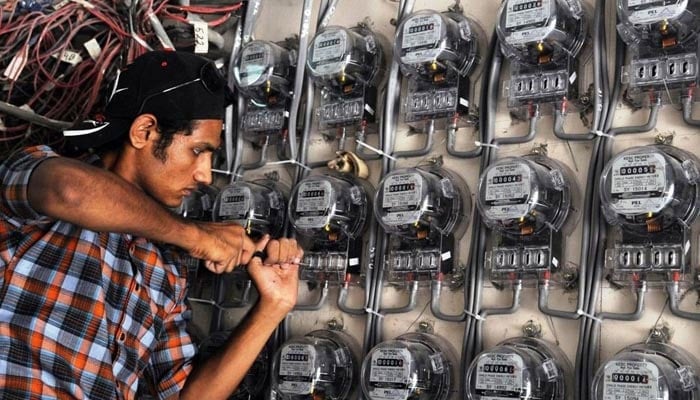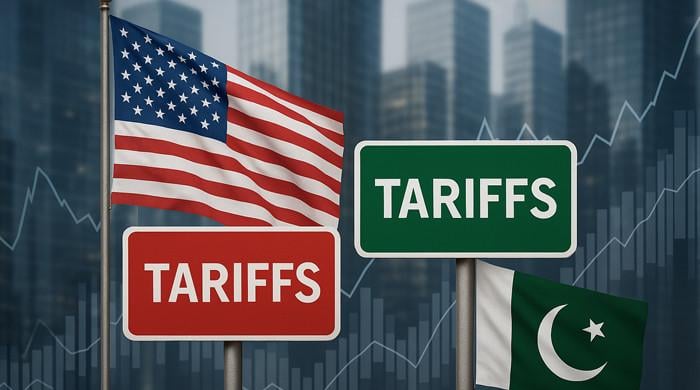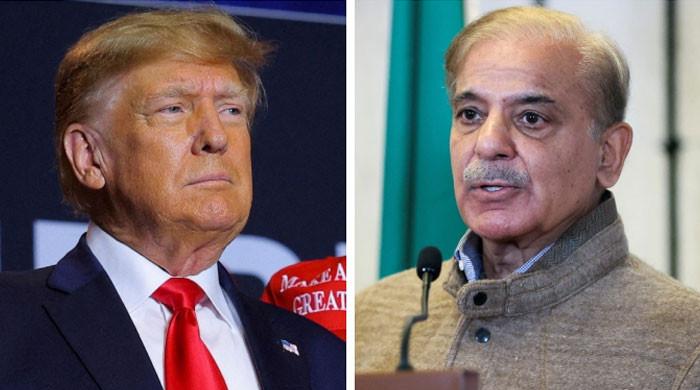Power tariff: Rs3.93 out of Rs7.41 electricity rate cut to be permanent
Factual reduction is of Rs5.96 per unit under Quarterly Tariff Adjustment, also includes cut of Rs0.90 under FCA
April 05, 2025

- Rs3.93 relief comes from changes, termination of IPP agreements.
- Rs5.98 per unit relief to be financed via negative adjustments.
- Additional Rs1 per unit cut expected in the third quarter adjustment.
ISLAMABAD: Out of the Rs7.41 electricity tariff cut announced by Prime Minister Shehbaz Sharif, official sources have said the portion of Rs3.93 per unit will be on a permanent basis but Rs3.50 would not be sustainable on a long-term basis, The News reported on Saturday.
According to a senior Power Division official, the government has factually reduced the power tariff by Rs5.96 per unit which after being taxed with 18% GST becomes an average reduction of Rs7.41 per unit for the end consumers.
The Rs5.96 per unit relief includes the reduction of Rs1.90 per unit under Quarterly Tariff Adjustment but after being taxed, it turns Rs2.37 per unit, Rs1.70 per unit reduction in tariff because of Rs10 per litre petroleum levy which turns Rs2.12 per unit after adding the GST.
The Rs5.96 per unit relief also includes a relief of Rs0.90 under the fuel charge adjustment (FCA) which becomes Rs1.13 per unit after GST tax.
The relief also includes a reduction of Rs1.45 per unit which is Rs181 per unit after GST that has been harnessed as a result of talks of the task force on power with IPPs, and government power plants.
The Rs3.93 sustainable relief has come from two heads which include Rs1.81 per unit relief as a result of terminating power purchase agreements of five IPPs with an impact of Re0.64per unit, converting PPAs of 14 IPPs into take and pay mode and termination of contract of one IPP with impact of Re0.65 per unit, delinking of eight bagasse based power plants with an impact of Re0.10 per unit and revised contracts of six government power plants (GPPs) with an impact of Re0.41 per unit.
However, under the second head, Rs2.12 per unit relief on a permanent basis has emanated from savings to be collected on account of the latest Rs10 Petroleum Levy. The government has submitted the petition to the National Electric Power Regulatory Authority (Nepra) seeking Rs1.81 per unit relief as a result of task force negotiations with IPPs to be determined by the Nepra.
Also, the Rs3.50 per unit reduction may not be sustainable on medium-to-long term basis, as it includes Rs2.37 per unit relief as a result of reduction in quarterly tariff adjustment (QTA) and Rs1.13 per unit relief on account of savings in fuel charges adjustment. The relief of Rs3.50 will be extended for three months (April, May and June).
The Nepra after every quarter determines that QTA and passes its impact on to the end consumers. Likewise, fuel charges adjustment on a monthly basis is a pass-through item and the regulator every month determines the FCA. It is a routine matter, but the government has made the relief as a result of FCA and QTA a part of Rs7.41 per unit relief.
In the past when the regulator used to hike the tariff every month under FCA head and increase after three months under QTA, the government used to say that it had nothing to do with it and said that the regulator was responsible. Now the imported fuel has dwindled in the international market and dollar value in Pakistan is stable at Rs278-280 with much reduction in inflation, the relief under FCA and QTA is being plucked.
And if the dollar value appreciates and the POL, coal and LNG prices go upward in the international market, then relief under QTA and FCA would evaporate.
Factors such as exchange rate, inflation, O&M and capacity payments are considered to determine QTA. However, there is one factor of capacity payments that has been reduced a lot because of negotiations of the task force on power with IPPs and GPPs. However, if the macroeconomic indicators are disturbed for any reason, then it will have an adverse impact on the tariff of electricity as well.
The power relief package will come from a mix of negative quarterly tariff adjustments, fuel charge cuts, and funds from the petroleum levy, the Power Division informed the power regulator Friday. With taxes, this amount becomes Rs7.41 per unit.
Officials of the Power Division told the Nepra during a public hearing that the Rs5.98 per unit relief will be financed through existing negative adjustments, including Rs1.90 from the second-quarter tariff adjustment, Rs1.36 from negative fuel charge adjustments (FCA), and Rs1.71 from the petroleum development levy (PDL).
An additional Rs1 per unit cut is expected in the third quarter adjustment (Jan–March 2025), with a petition set to be filed with Nepra in mid-April.
With tax adjustments factored in, the total benefit is projected to reach Rs7.69 per unit for industrial users and Rs7.41 for domestic consumers. Lifeline users, however, will be excluded from the package, officials informed during the hearing.
Notably, the POL consumers will bear the brunt of Rs58.6 billion cross-subsidise Rs1.71 per unit cut, for which the government in mid last month raised the petroleum development levy (PDL) on petrol and diesel from Rs60 to Rs70 per litre.
During the hearing, prominent industrialist Aamir Sheikh questioned whether both the current and upcoming QTA reductions would apply simultaneously within the April–June quarter. He said clarity was crucial for businesses, particularly exporters, to forecast operational costs and pricing strategies.
Power Division officials reiterated that the relief package has already been approved by the federal cabinet and will apply across all power distribution companies, including K-Electric, for a duration of three months. The government has opted to use quarterly adjustments rather than annual tariff rebasing, citing Pakistan’s current economic constraints and fiscal space.












